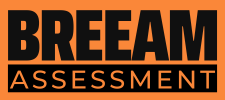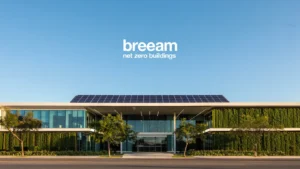In an era where environmental consciousness is paramount, educational institutions serve as crucial catalysts for instilling sustainable practices in future generations. Amid this backdrop, the Building Research Establishment Environmental Assessment Method (BREEAM) emerges as a beacon of sustainability, offering a robust framework for enhancing the environmental performance of schools and educational facilities across the UK. In this comprehensive exploration, we delve into the application of BREEAM in educational settings, examining its significance, benefits, strategies, challenges, and future implications. By embracing BREEAM certification, schools can not only foster environmentally responsible practices but also empower students to become agents of positive change in their communities.
Understanding BREEAM for Schools and Education
Definition and Scope
BREEAM for Schools and Education involves the assessment and certification of educational facilities based on their environmental sustainability performance. This evaluation encompasses various aspects, including site selection, design, construction materials, energy efficiency, indoor environmental quality, and operational practices. By scrutinizing these elements, BREEAM aims to create conducive learning environments that prioritize student well-being and environmental stewardship.
Key Considerations for Educational Facilities
Educational institutions face unique challenges in implementing sustainable practices due to their diverse functionalities and user requirements. Balancing functionality with environmental considerations is essential, as educational facilities must meet the needs of students, staff, and administrators while minimizing their environmental footprint. Key considerations include fostering student involvement in sustainability initiatives, aligning sustainability goals with educational objectives, integrating sustainability into the curriculum, and engaging with stakeholders to promote a culture of sustainability.
Integration of BREEAM in School Design and Construction
BREEAM certification is seamlessly integrated into all phases of school projects, from initial planning to ongoing operation. It provides a comprehensive framework for incorporating sustainable design features, materials, and technologies into educational facilities, ensuring they meet rigorous environmental standards and contribute to a greener future. During the design phase, architects and engineers work closely with BREEAM assessors to identify opportunities for energy efficiency, water conservation, waste reduction, and indoor environmental quality improvement. Sustainable design principles such as passive solar design, natural ventilation, and daylighting are integrated to minimize energy consumption and enhance occupant comfort. Throughout the construction process, contractors and project managers adhere to BREEAM requirements, using sustainable materials, construction methods, and waste management practices to minimize environmental impact and ensure compliance with sustainability criteria.
Benefits of Implementing BREEAM in Educational Facilities
Environmental Benefits
BREEAM-certified schools play a pivotal role in environmental conservation by reducing energy consumption, minimizing waste generation, and preserving natural resources. They serve as exemplars of sustainability within their communities, demonstrating the feasibility and benefits of environmentally responsible practices. By implementing energy-efficient technologies, renewable energy sources, and sustainable building materials, BREEAM-certified schools contribute to climate change mitigation, air and water quality improvement, and biodiversity conservation. These environmental benefits extend beyond the school premises, positively impacting the surrounding community and ecosystem.
Educational Benefits
Beyond environmental stewardship, BREEAM-certified schools offer invaluable educational opportunities by providing hands-on learning experiences, integrating sustainability into the curriculum, and fostering environmental literacy among students. These schools serve as living laboratories for sustainable practices, inspiring students to become responsible stewards of the environment. Through experiential learning activities such as energy audits, waste reduction initiatives, and eco-friendly gardening projects, students gain practical skills and knowledge that empower them to address real-world environmental challenges. By embedding sustainability into the curriculum across various subjects, schools promote critical thinking, problem-solving, and civic engagement skills essential for addressing complex sustainability issues.
Financial Benefits
While initial investment costs may be higher for BREEAM-certified schools, the long-term financial benefits are substantial. These include lower operating costs, increased property values, and enhanced marketability, positioning certified schools as attractive investments for stakeholders. By reducing energy consumption, water usage, and maintenance expenses, BREEAM-certified schools achieve significant cost savings over their lifecycle. Additionally, they benefit from improved occupant health and productivity, reduced absenteeism, and increased student enrollment and retention rates. Furthermore, BREEAM certification enhances the school’s reputation and brand value, attracting students, staff, and investors who prioritize sustainability and environmental responsibility.
Strategies for Achieving BREEAM Certification in Schools
Sustainable Site Selection and Design
Strategic site selection and sustainable design are paramount for achieving BREEAM certification in schools. These strategies involve maximizing natural light, ventilation, and outdoor space, as well as incorporating green infrastructure and energy-efficient building systems. By selecting sites with minimal environmental impact, optimizing building orientation, and preserving natural habitats, schools can minimize their ecological footprint and enhance biodiversity. Sustainable site design features such as permeable paving, rainwater harvesting, and native landscaping promote water conservation and stormwater management, reducing the school’s water usage and runoff pollution. Furthermore, incorporating green spaces, outdoor classrooms, and recreational areas improves the quality of life for students, staff, and visitors, fostering a sense of connection to nature and promoting physical and mental well-being.
Energy Efficiency and Renewable Energy
Improving energy efficiency and integrating renewable energy sources are integral components of BREEAM certification. Schools can achieve this through measures such as energy-efficient lighting, HVAC systems, and rooftop solar panels, reducing their carbon footprint and energy costs. By optimizing building envelope performance, installing high-efficiency heating, cooling, and ventilation systems, and implementing demand-side management strategies, schools can significantly reduce their energy consumption and greenhouse gas emissions. Additionally, by generating onsite renewable energy through solar photovoltaic panels, wind turbines, or biomass systems, schools can further offset their energy usage and contribute to the transition to a low-carbon economy. Energy management practices such as energy monitoring, metering, and control systems enable schools to track their energy usage, identify inefficiencies, and implement corrective actions to optimize performance and achieve energy savings.
Indoor Environmental Quality
Enhancing indoor environmental quality is essential for creating healthy, productive learning environments. BREEAM-certified schools prioritize indoor air quality, thermal comfort, and acoustics, ensuring optimal conditions for student health and well-being. By using low-emission materials, such as paints, adhesives, and finishes, schools can minimize indoor air pollutants and allergens, creating a healthier indoor environment for students, staff, and visitors. Adequate ventilation, filtration, and humidity control measures prevent indoor air quality issues such as mold growth, stale air, and discomfort, improving overall occupant satisfaction and productivity. Furthermore, optimizing natural daylighting, views to the outdoors, and thermal comfort conditions enhances the learning environment, reduces reliance on artificial lighting and heating, and promotes student engagement and academic performance.
Challenges and Solutions
Common Challenges in Implementing BREEAM for Schools
Challenges schools may encounter when pursuing BREEAM certification include limited funding, resistance to change, and the complexity of the BREEAM certification process. However, these challenges can be overcome through creative financing mechanisms, stakeholder education, and streamlined certification procedures. Schools can leverage public and private funding sources, grants, and incentives to support sustainability initiatives and offset initial costs. Engaging with stakeholders, including students, parents, teachers, administrators, and local community members, fosters buy-in, collaboration, and a sense of ownership in the sustainability journey. Furthermore, providing training, resources, and guidance to project teams, contractors, and facility managers facilitates the implementation of BREEAM requirements and ensures successful certification outcomes.
Future Trends in BREEAM for Schools and Education
Emerging Technologies and Innovations
Future trends in BREEAM for schools include the integration of smart building technologies, modular construction methods, and advancements in sustainable materials and renewable energy solutions, further enhancing the environmental performance of educational facilities. Smart building technologies such as building automation systems, occupancy sensors, and energy management software enable real-time monitoring, analysis, and optimization of building systems and operations, maximizing energy efficiency and occupant comfort. Modular construction methods, prefabricated components, and off-site fabrication reduce construction waste, minimize project timelines, and enhance construction quality, providing cost-effective and sustainable building solutions for schools. Additionally, advancements in sustainable materials such as biobased, recycled, and low-carbon materials offer alternative options for building construction and renovation, reducing embodied carbon emissions and environmental impact.
Anticipated Changes in BREEAM Criteria
BREEAM criteria for schools may evolve to address emerging sustainability challenges and align with global sustainability goals, such as the UN Sustainable Development Goals. Anticipated changes include an increased emphasis on occupant health and well-being, circular economy principles, and life cycle assessment methodologies. Enhancements to BREEAM criteria may include new credits and benchmarks for promoting healthy indoor environments, integrating biophilic design elements, and addressing social equity and inclusivity considerations. Furthermore, BREEAM assessments may incorporate circular economy principles such as materials reuse, recycling, and resource efficiency, encouraging schools to adopt circular business models and sustainable procurement practices. Life cycle assessment methodologies may be integrated into BREEAM assessments to evaluate the environmental impacts of building materials and products across their entire life cycle, from raw material extraction to end-of-life disposal, enabling informed decision-making and sustainability performance optimization.
BREEAM certification offers a roadmap for schools and educational facilities to enhance their environmental performance, promote sustainability, and provide inspiring learning environments for students. By embracing BREEAM, schools can reap environmental, educational, and financial benefits while instilling a culture of sustainability that will shape the future of education and the world.
Ready to embark on your sustainability journey?
Contact our team of experts today to learn more about how BREEAM certification can transform your school into a model of sustainability. Together, let’s build a brighter future for education and the planet.



